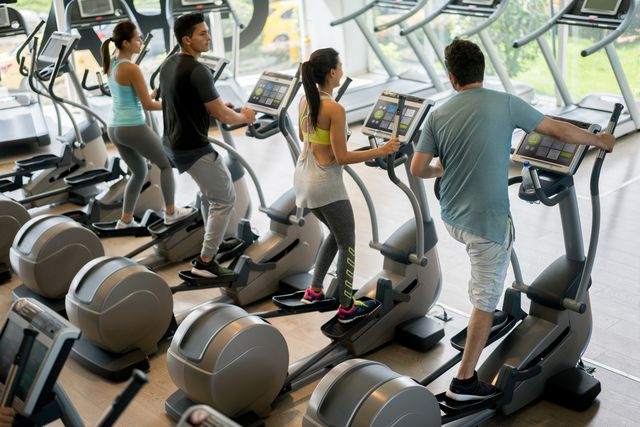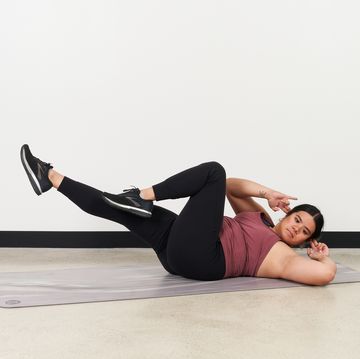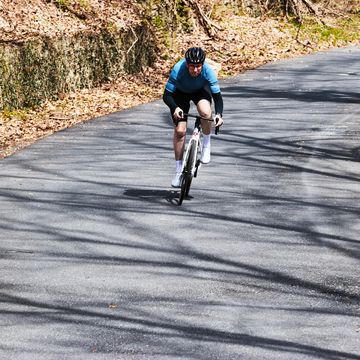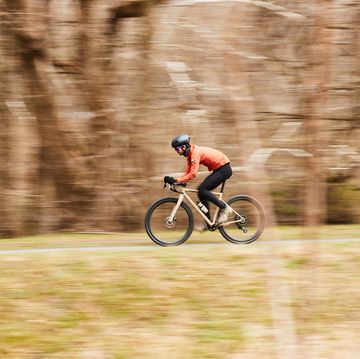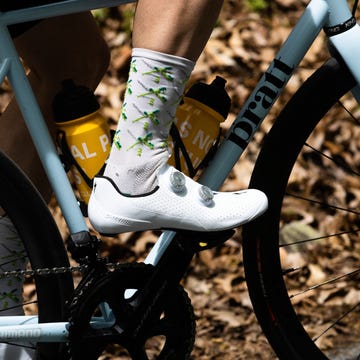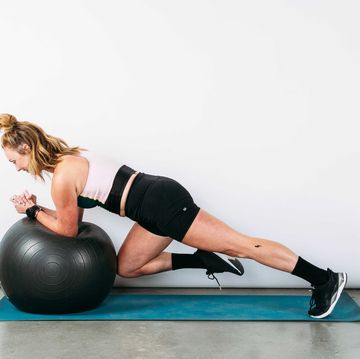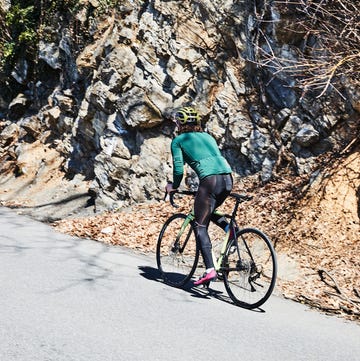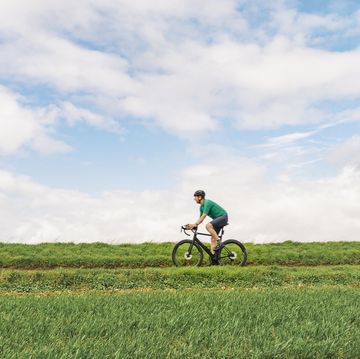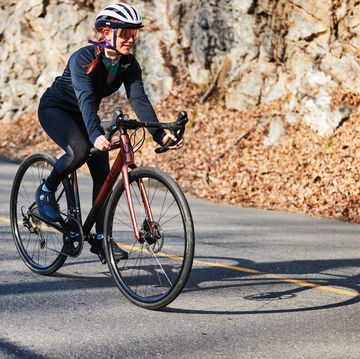It’s no secret that when you ride a lot, you get very good at cycling. But while all that time in the saddle strengthens your cycling-specific muscles—including your heart, hamstrings, and glutes—other muscles, such as your core, hip, and quad muscles, aren’t used as much, according to Neil Cook, a triathlon coach based in New York City.
“It’s important for athletes to increase their range of motion,” Cook says. “Cyclists tend to put too much weight on their seats, which eliminates the need to keep their cores engaged. As a result, their cores and hip flexors can get weaker.” The more you neglect these muscles, the higher your risk is for developing injuries down the road, he explains.
The good news is that it’s easy to supplement your cycling with other exercises to build strength in these areas. As a former competitive runner-turned-triathlete, Cook favors running and swimming to build strength and endurance. But these two activities aren’t always feasible, since the high-impact effects of running can potentially cause injuries (especially for athletes who mainly ride), and not everyone has access to a pool or knows proper stroke technique. A good alternative to these cardio exercises, however, is that old gym stalwart: the elliptical machine.
Here, Cook explains the benefits of working out on an elliptical and why it can be a great supplement to your cycling training.
1. It improves your biomechanics.
Cook says that using an elliptical mimics scaling a staircase: You push off with your foot, then engage your quad and hamstring to turn the pedal, as you do when stepping up on a stair.
“But most people have poor technique when climbing stairs,” he says. “People tend to lean forward too much and stick their butts out, which shortens their hip flexors and puts a lot of strain on their knees and lower back.” To walk up stairs properly, he explains, you should keep your back straight, abs tight, and hips directly over your feet, which forces you to engage your core, hip flexors, hamstrings, and glutes with each step you take.
When you workout on the elliptical, Cook suggests using this same proper stair-climbing technique, keeping your hips in line with your shoulders and knees while you rotate the pedals with your legs. By practicing and perfecting this movement on the machine, athletes can improve their biomechanics and posture—which is important not only for cycling, but also for other sports and activities of daily life. Keeping your hips and core strong will help you ride with better form so you can go farther and faster, Cook says.
[Find 52 weeks of tips and motivation, with space to fill in your mileage and favorite routes, with the Bicycling Training Journal.]
2. It boosts your balance.
Whether you ride roads or trails, you know that balance is key to staying secure in the saddle. To ensure a wobble-free ride, it’s important to incorporate exercises that help improve stability, like using the elliptical.
“When you’re on the elliptical, you have to concentrate on keeping your core tight and your hips level and above your feet, while also rotating the pedals in an even motion,” Cook says. “It’s all a balancing act.”
For an even greater balance challenge, Cook recommends not using the arm handles and instead pumping your arms in a running motion. This eliminates the option of stabilizing yourself with your arms, which leaves your hip flexors, core, glutes, and lower legs responsible for keeping you upright and moving.
If you’re nervous about going hands-free, Cook suggests warming up on the machine with the arm handles at a comfortable resistance, then reducing your resistance, letting go of the handles, and pumping your arms. To eliminate excess strain on your hips and legs—especially if you’re recovering from an injury—aim for an easy resistance that allows you to turnover at a speed similar to running. As you get more comfortable with the motion, you can increase your resistance.
3. It gives your brain a break.
One of the greatest benefits of cross training is that it allows you to focus on something other than cycling. And that time away from the bike can do both your body and brain some good, especially when you’re stuck indoors on the trainer during the winter.
“Doing another sport gives you a psychological break,” Cook says. “If you’re feeling burned out from cycling but don’t want to lose your fitness, hop on the elliptical. You’ll still get your blood flowing, but your mind will be in a much better place.”
Cook also notes that if you’re really mentally and physically wiped, it might be a sign that you need a day off completely. He gives his athletes a flexible day off each week, during which they can either do a light cross-training session or just chill on the couch.
“If you’re stressed about your kid’s birthday party, work obligations, and that race coming up, adding an extra training session—even if it’s cross training—might not be helpful,” he says. “Staying healthy and competitive is all about knowing when to take time off.”
4. It helps prevent injuries.
While trading in your bike for the elliptical won’t magically cure common cycling injuries like knee and back pain, doing it regularly will help strengthen the muscles surrounding these areas—namely, the hips, glutes, hamstrings, and core—which can help prevent flare-ups from reoccurring in the future, Cook says.
One big benefit of an elliptical is that using it mirrors the motion of running and works similar muscles as the sport, but without the impact. So for cyclists looking to increase their cardio fitness and up their leg strength while trying to avoid injury with less impact, the machine is a great option, notes Cook.
“Low-impact cardio exercise like ellipticalling will give your engine a boost without seriously stressing your bones and ligaments,” says Cook.
That said, he notes that injured athletes should check with their doctors before starting any new exercise program, since some injuries may be made worse by the exercise. For example, an injury to the IT band (a thick strip of fascia that runs from your hip to knee), which is characterized by a sharp pain on the outer side of the knee, can be aggravated by the forward-and-backward motion on the elliptical. In these cases, even lower-impact activities like swimming along with rehab exercises to correct the injury might be a better option, Cook says.
“Remember to let your body be your guide in training,” he says.

Hailey first got hooked on running news as an intern with Running Times, and now she reports on elite runners and cyclists, feel-good stories, and training pieces for Runner's World and Bicycling magazines.
